Rhubarb recently appeared at my local grocery store and I knew I had to seize the opportunity to bake with it before it’s short season is up. The elusive rhubarb is notoriously tart so I sought to incorporate it into a dessert that I often find a tad too sweet. Meringue was the first one that came to mind, and after thinking through desserts with a meringue component, I landed on pavlova as the perfect compliment to the rhubarb.
Pavlova is a meringue-based dessert, in which egg whites are whipped with sugar and baked at a very low temperature, yielding a dessert that is crisp and chewy on the outside but soft and marshmallowy in the center. It’s often topped with cream and fresh fruit, offering a refreshing counterbalance to the sugary meringue. In my version, rhubarb is slow-roasted with orange juice, added to the top of a rosemary-infused whipped cream topping and paired with fresh cara-cara oranges. The roasted rhubarb sits atop a cardamom-spiced meringue, which adds warmth to complement the rhubarb. The tart rhubarb and and sweet-tart orange add a refreshing note and stunning red and pink color to the pillowy meringue, yielding the perfect gluten-free showstopping dessert.
Since I haven’t made many pavlovas in my life, I very slightly adapted Claire Saffitz’s pavlova recipe for the meringue base and primarily experimented with flavoring the meringue and the cream and developing the roasted rhubarb topping. As someone who likes desserts that are not too sweet, this rhubarb meringue combination hits the perfect flavor note and the texture of the meringue mixed with the cream is nothing short of heavenly.
Rhubarb orange pavlova
Course: Cakes and custardsDifficulty: Weekend baking project1
8-inch pavlova2
hours2
hoursThis rhubarb orange pavlova has a crackly, chewy crust with a fluffy cardamom-spiced interior, and is topped with a rosemary orange cream, roasted rhubarb, and fresh cara-cara oranges. The dessert is vibrant, fresh, and has the perfect balance of tart and sweet. I recommend using a stand mixer for the best results, as the meringue requires a significant amount of mixing time. For the best results, try to make this recipe on a day with low humidity.
Ingredients
- For the rhubarb
3-4 large stalks of rhubarb (about 350g)
2 Tbsp granulated sugar
zest and juice of half an orange
1/8 tsp ground cinnamon
- For the meringue
6 large egg whites, room temperature
1/2 tsp kosher salt
1/2 tsp white vinegar
1 cup (200g) granulated sugar
1 cup (120g) confectioners’ sugar
1 tsp vanilla extract
1/2 tsp ground cardamom
- For the cream and topping
1 tablespoon finely chopped fresh rosemary
1 cup heavy cream
1/2 cup mascarpone
2 tsp orange zest
2-3 cara-cara or blood oranges, peeled, thinly sliced and quartered
Instructions
- Prepare the rhubarb
- Preheat the oven to 350F. Cut the rhubarb into 2-inch pieces. For particularly thick stalks, you can also slice in half lengthwise. Place the rhubarb in a glass or ceramic baking dish. Add the granulated sugar, orange juice, and orange zest and toss well to coat. Let rest for about 15 minutes. Then bake for 20-30 minutes, stirring occasionally, until the rhubarb is tender–you can poke it with a fork or give it a test to check. Let cool slightly, then place in a container along with any remaining juices and refrigerate to chill completely.
- Infuse the heavy cream
- The night before serving the dessert, place the finely chopped rosemary into the cream and stir to combine. Let sit for 8-10 hours in the fridge to infuse. Then strain out the rosemary, using the back of a spoon to press down on the leaves in the strainer to help extract as much flavor as possible. Place the cream back in the refrigerator until ready to use.
- Make the pavlova
- To the bowl of a mixer, add the egg whites, salt, and vinegar. Mix on medium low speed until the egg whites have broken up and the mixture becomes foamy and transforms from translucent to a more opaque white. Then very slowly sprinkle in the granulated sugar while continuing to whip on medium speed, sprinkling in about a spoonful at a time. Continue whipping until the mixture becomes very glossy and holding stiff peaks. If you pick up the whisk and hold it upright, the egg whites at the tip should stick straight up and not flop down. This can take up to 10-15 minutes depending on your mixer and the temperature of your egg whites so be patient.
- Once you reach this stage, sift the confectioners’ sugar over the mixture. Mix on low speed to incorporate the sugar. Then increase the speed to medium and continue whipping until you once again have stiff peaks. Then add the vanilla and cardamom and beat just until combined.
- Preheat the oven to 200F. Flip a sheet pan over so the bottom becomes the top. Then place a parchment paper on top. Trace an 8-inch circle on the parchment paper and flip it over so you can still see the outline but the exterior surface does not have the pen marks. Place a small bit of meringue on the four back corners of the parchment and use it to “glue” the corners to the sheet pan to prevent the paper from sliding. Then, use a spatula to remove the meringue from the mixing bowl and pile it into the traced circle. Use your spatula to help even out the top and sides and guide it into the correct shape, ensuring that it spreads to the full diameter of the circle. Once the top and sides are smooth, using the back of a large spoon, make relatively large indentations (think of them as mini craters) all across the top. This will create little pockets for the cream to sit within later on.
- Place in the oven and bake for 90-120 minutes. Resist the urge to oven the open door. Around 90 minutes, check your meringue–it’s ready when there is a thick, hard layer of meringue on the top but when you press down a bit with your finger, you can feel it’s a bit soft and bouncy underneath. You can also carefully check that when slightly lifted with a spatula, the meringue easily releases from the parchment (note that it’s natural for some cracks to form in the meringue and most will be covered up by the cream and topping so don’t worry too much!). Once it appears to be ready, turn off the oven, prop the door open slightly and let gradually cool for about 45 minutes. Then remove from the oven and let cool completely to room temperature. The meringue is best served the day it’s made once completely cooled but it can be stored in an airtight container overnight.
- Assemble and decorate
- Prepare the cream topping. In a large mixing bowl add the rosemary-infused heavy cream, mascarpone, and orange zest. Using a whisk or electric mixer, beat until soft peaks form.
- Carefully slide your pavlova onto a large plate or serving platter. Using a spatula, spread all of the cream mixture over the top in an even layer. Arrange the rhubarb and orange slices on top and pour any remaining juices from the roasted rhubarb. Slice and serve. This is best served within a couple of hours after assembly. Leftovers can be broken up into smaller pieces and stored in the refrigerator–the texture will be different the next day but it will still be delicious!
Notes
- Make ahead: The rhubarb can be roasted and refrigerated several days in advance. The cream can also be infused with the rosemary up to a week before using, as long as the rosemary leaves have been removed. The meringue can be made up to one day in advance and stored in an airtight container.

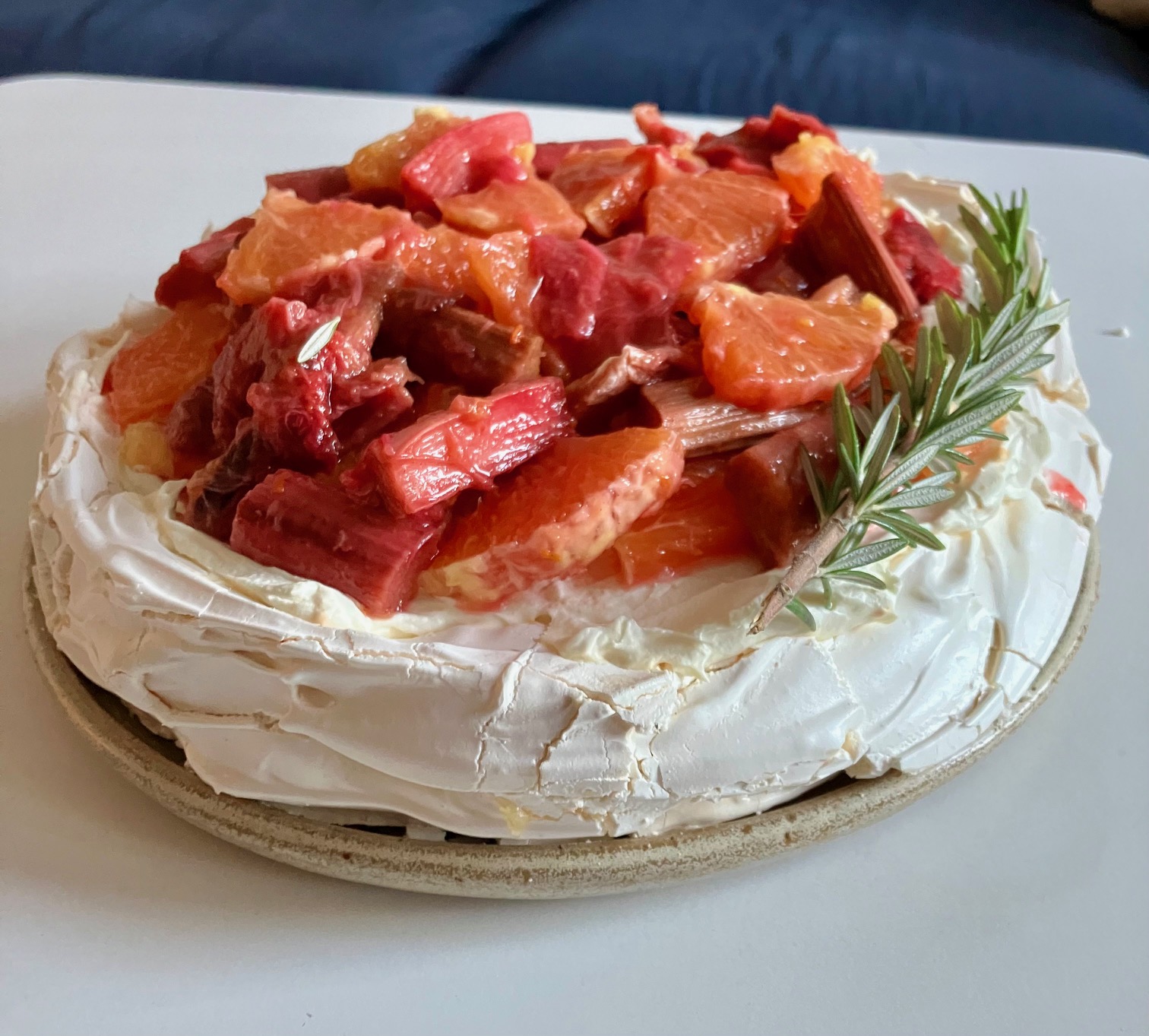
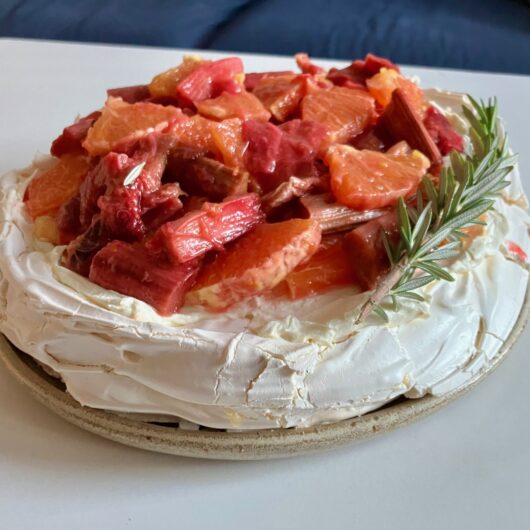

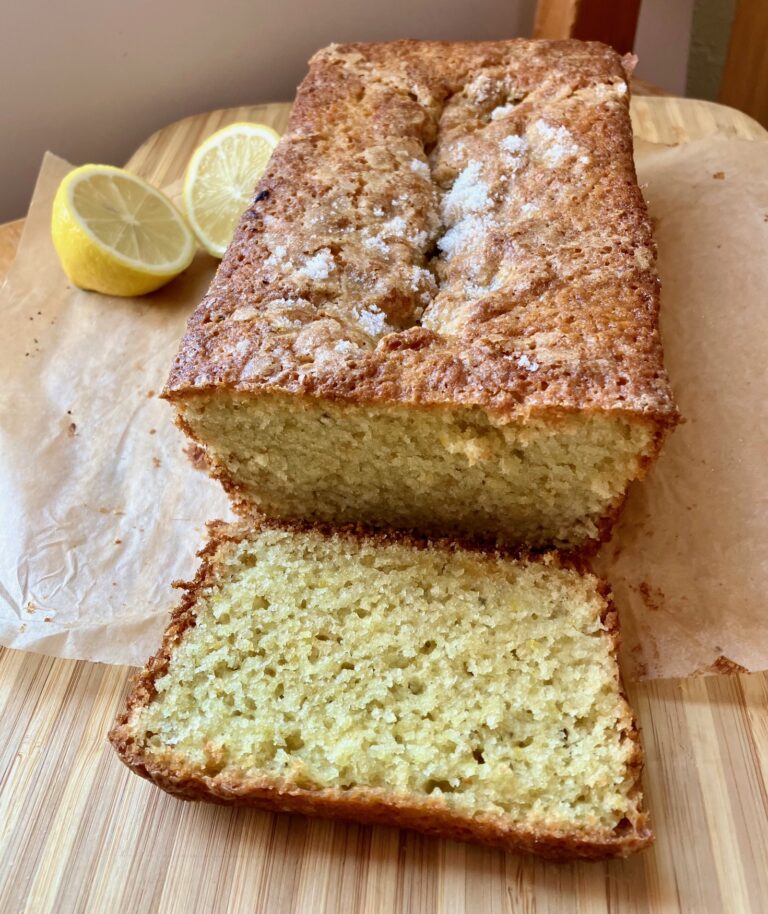
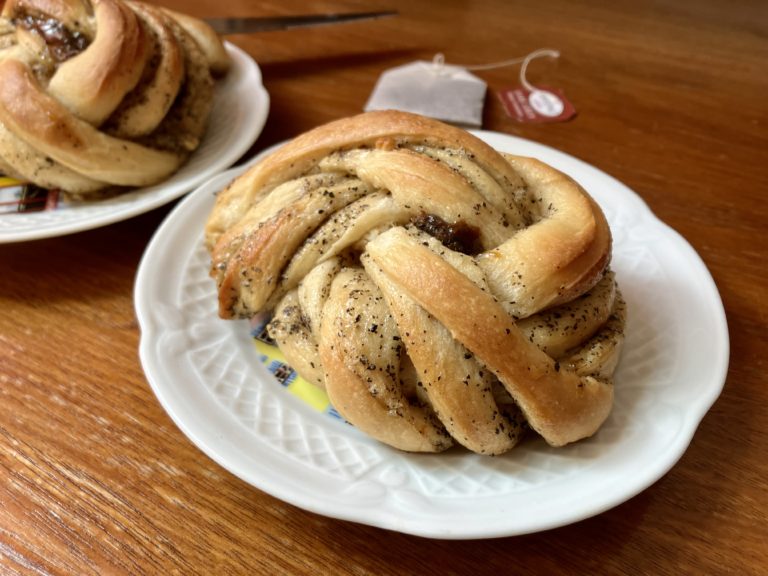
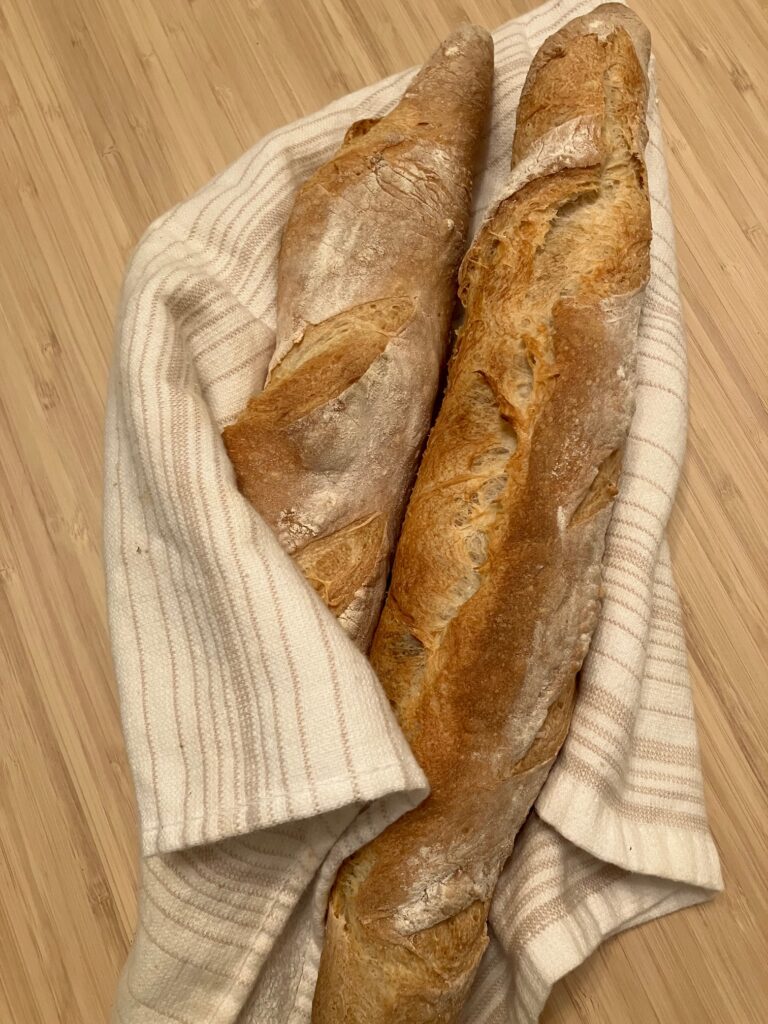
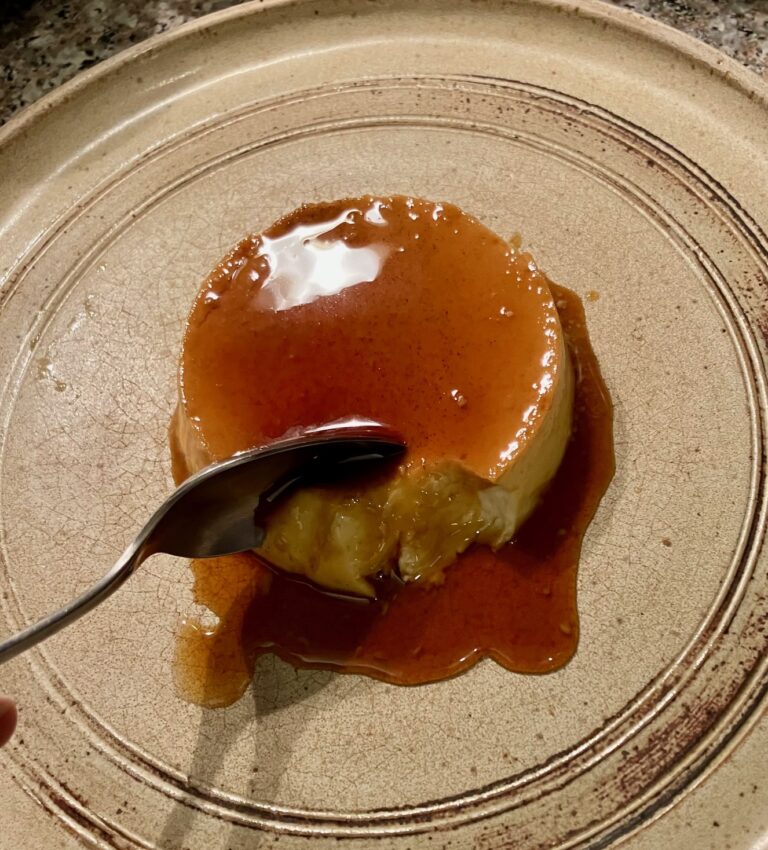

Leave a comment